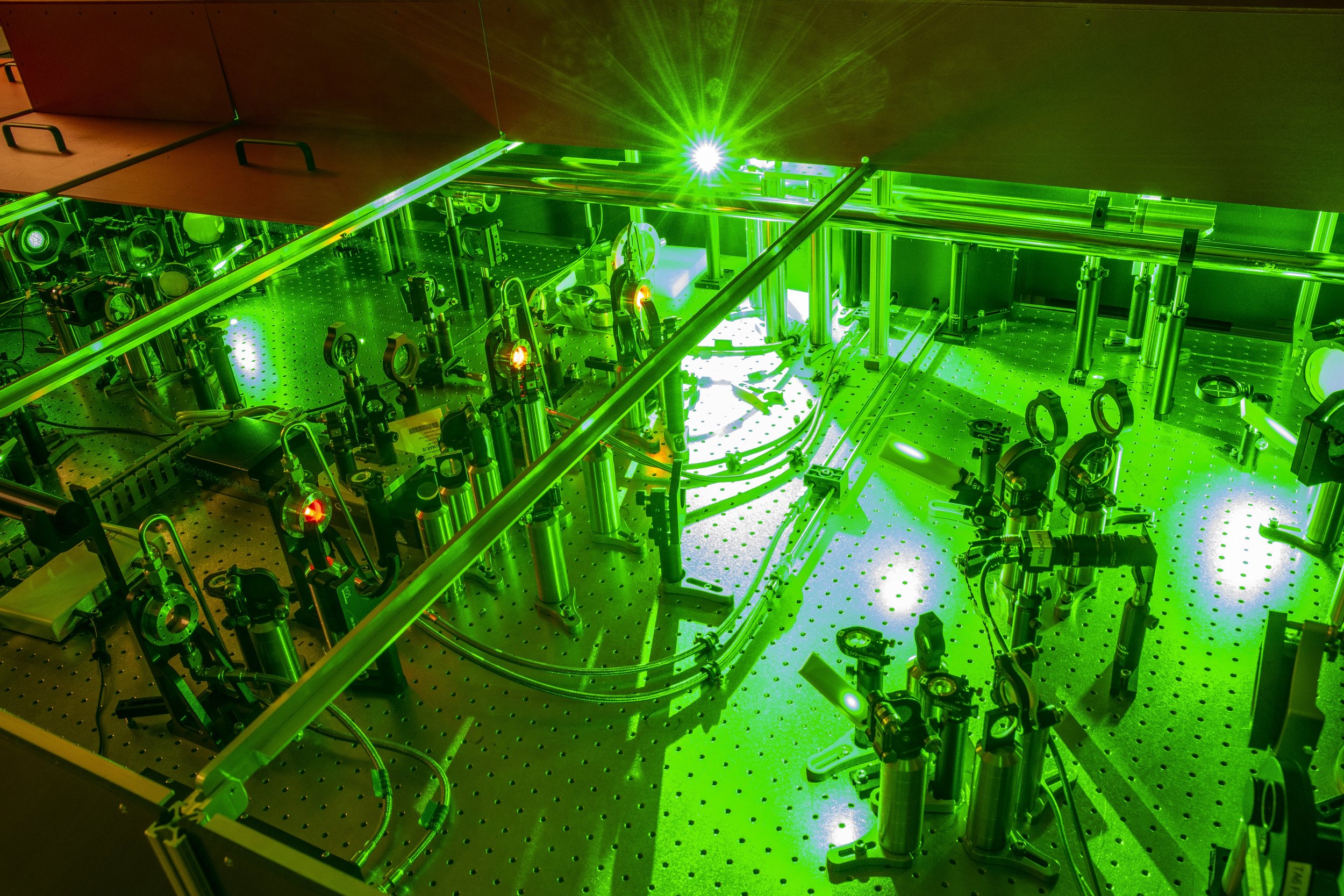
BELLA HTT - Hundred Terawatt Thomson
See also details on the HTU system at BELLA here.
The Berkeley Lab Laser Accelerator (BELLA) Center houses several laser plasma accelerator (LPA) R&D facilities. BeamNetUS users can access the BELLA HTT system offering the capability to accelerate flexible electron beams by utilizing two laser amplifier arrays providing 50 TW and 10 TW pulses, respectively, as short as 40 fs.
The Center’s own research focuses on the development and application of laser-plasma accelerators, which may provide user opportunities in use of the generated beams. LPAs produce ultrahigh accelerating fields (1-100 GV/m) and provide a compact technology for a variety of applications that include future accelerators for high energy physics and drivers for high-energy photon sources. Electron beams at 0.01-500 MeV have been produced and measured. Femtosecond, keV band betatron radiation is produced from the electron acceleration process. Quasi-monoenergetic MeV photon beams are produced by Thomson scattering of a laser pulse from the electron beam.
Facility bio
Name of Facility: BELLA HTT and BELLA HTU
Laboratory: Lawrence Berkeley National Laboratory
Address: 1 Cyclotron Road, Berkeley, CA 94720
Point of Contact: Jeroen van Tilborg, Sam Barber
Facility website: Link
Publications list: Link
BELLA is also part of LaserNetUS. BeamNetUS specifically offers awards for research involving the generated electron beam- pure laser research proposals should be directed to LaserNetUS.
| Parameter | Value |
|---|---|
| Beam Type | Electrons |
| Beam Energy | 1-500 MeV |
| Repetition Rate | 1 Hz (5 Hz possible) |
| Bunch Charge | 0.01-0.1 nC |
| Bunch Length | 1-10 microns |
| Beam spot size | 1-5 um at source, at 0.5-2 mrad divergence |
| Energy spread | few % to tens-% |
Capabilities
Science specialists: The BELLA center covers the full spectrum of competencies in the field of laser plasma accelerators ranging from theory over experimental laser and plasma methods including diagnostics and plasma source R&D, and experts on simulation tools development.
Some of the available tools:
Synchronized laser beams (50 TW and 10 TW)
Fluorescence screens for beam profile measurements
Magnetic spectrometer
Neutron and gamma ray monitoring
MeV photon detectors are available including scintillators, and Compton spectrometers
Laser diagnostics
Ideal Experiment
The ideal BeamNetUS experiment in a BELLA HTT BeamNetUS campaign takes advantage of the plasma source and two synchronized multi-TeraWatt femtosecond lasers available, with independent delay and compression control, to drive and probe various schemes of laser-plasma acceleration. This can include novel injection techniques, novel plasma acceleration concepts, novel electron beam and wakefield diagnostics, and novel beam control capabilities. Part of each experimental campaign will involve re-establishing the accelerator operating conditions that are required to make the campaign successful.
Due to the flexible laser & plasma-target configurations possible, achieving the desired beam parameter requires part of the campaign to be dedicated to establishing or re-establishing the accelerator performance.



